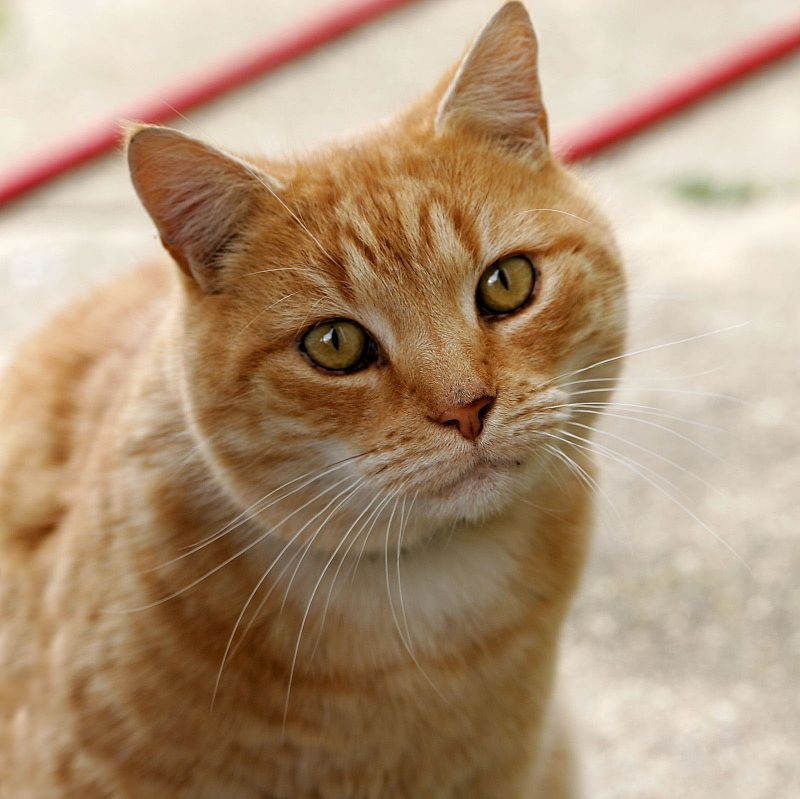Snakes can be a significant concern for homeowners, especially in regions where these reptiles are prevalent. While various methods exist to deter snakes, many people are turning to pets as a more natural and engaging solution. But what pets are truly effective at keeping snakes away? This article delves into the best pet options for snake deterrence, examining animals like dogs, cats, guinea fowl, peacocks, and owls, to help you make an informed decision. We’ll explore the science behind their effectiveness, considering their natural behaviors and instincts, to determine which pet might be the right choice for your snake prevention needs.
Dogs: Alert Guardians and Snake Detectors
Dogs have long been lauded as loyal protectors, and their ability to deter snakes is another benefit of canine companionship. Certain breeds, particularly those with strong protective instincts and heightened senses, can be remarkably effective at detecting and discouraging snakes from entering your property.
Alt text: Alert German Shepherd dog, a breed known for protective instincts, scanning a backyard environment for potential threats like snakes.
A dog’s keen sense of smell and hearing allows them to perceive snakes long before humans might notice them. Their territorial nature further enhances their snake-deterrent capabilities. When a dog senses a snake, it may bark, growl, or otherwise alert its owners to the potential danger. This early warning system can be invaluable in preventing snakes from getting too close to your home or family.
Beyond alerting you to the presence of snakes, many dogs possess a strong prey drive. This instinct can lead them to chase and even catch small animals, including snakes. While not all dogs will actively hunt snakes, their presence and predatory behavior can create an unwelcome environment for snakes, discouraging them from establishing themselves in your yard. Breeds like terriers, known for their hunting prowess, are often cited as being particularly adept at pest control, which can extend to snakes.
However, it’s crucial to remember that not all dogs are equally effective snake deterrents. A dog’s individual temperament, breed, and training all play a role. Some dogs may be naturally more alert and protective than others. Training can further enhance a dog’s ability to detect and respond to snakes. It’s also important to consider the safety of your dog; snake bites can be dangerous, and even fatal, to canines.
Cats: Agile Hunters with Predatory Prowess Against Snakes
Cats, with their inherent agility and predatory instincts, are also frequently mentioned as pets that can help keep snakes at bay. These nimble hunters are naturally inclined to stalk, chase, and capture small prey, and snakes can sometimes fall into this category.
 A tabby cat attentively watching something in a garden.
A tabby cat attentively watching something in a garden.
Alt text: Focused tabby cat in a garden, demonstrating the alert and predatory nature that makes cats potential snake deterrents.
Cats are masters of stealth and possess lightning-fast reflexes. They are adept at navigating tight spaces and undergrowth, areas where snakes might seek refuge. A cat’s hunting style – stalking, pouncing, and using sharp claws and teeth – can be effective in dispatching snakes, particularly smaller ones. Many cats are naturally curious and will investigate anything that moves, including snakes.
However, relying solely on cats for snake deterrence has its limitations. Like dogs, cats are not immune to venomous snake bites. A curious or aggressive cat might be bitten in an encounter with a snake, leading to injury or even death. Furthermore, not all cats are equally interested in hunting. Some may be more focused on birds or rodents, or simply lack the experience or inclination to confront snakes. Indoor cats, in particular, may have less exposure to snakes and therefore less developed hunting skills in this area.
It’s also important to consider the ethical implications of using cats for snake control. While they can be effective hunters, they can also disrupt local ecosystems and prey on native wildlife.
Guinea Fowl: The Noisy Alarm System and Snake Consumers
Guinea fowl are increasingly recognized for their unique ability to deter snakes. These ground-dwelling birds are known for their alertness and their distinctive, loud calls, which can serve as an effective early warning system for snake presence.
Alt text: Two guinea fowl foraging in grass, showcasing their natural behavior that aids in pest control, including snake detection.
Guinea fowl are highly vigilant and react to any perceived threat with loud, raucous calls. This alarm system is beneficial not only for alerting humans to the presence of snakes but also for deterring the snakes themselves. The sudden, noisy outburst from a flock of guinea fowl can startle snakes and discourage them from approaching.
Beyond their alarm calls, guinea fowl are also known to consume snakes, especially smaller ones. Their diet naturally includes insects, ticks, and other invertebrates, but they will also eat small reptiles, including snakes. While they may not actively hunt larger snakes, their foraging behavior can reduce the population of smaller snakes in an area.
Guinea fowl are relatively low-maintenance and can be a beneficial addition to rural or semi-rural properties where snake control is desired. They are social birds and thrive in flocks, which amplifies their alarm system effect. However, their loud calls can be disruptive to neighbors in more densely populated areas. They also require secure housing to protect them from predators.
Peacocks: Territorial Display and Startling Calls to Repel Snakes
Peacocks, with their striking beauty and territorial nature, are another bird species sometimes touted for their snake-deterrent qualities. These magnificent birds combine visual displays, loud vocalizations, and assertive behavior to potentially discourage snakes from their territory.
Alt text: Close-up of a male peacock displaying its vibrant plumage, a visual deterrent that can signal territorial dominance to snakes.
Peacocks are known for their loud, piercing calls, which can be startling to both humans and animals, including snakes. These calls serve as territorial announcements and can create an environment that snakes find unsettling. The sudden, loud cries of a peacock may deter snakes from lingering or approaching.
In addition to their vocalizations, peacocks are also known to chase and even attack snakes. While not primarily snake hunters, peacocks are territorial birds and will defend their space against intruders. Their large size and assertive behavior can be intimidating to snakes. Furthermore, a peacock’s vibrant plumage and display behavior can serve as a visual signal to potential predators, including snakes, that they are a formidable presence.
Peacocks are relatively low-maintenance and can add a unique aesthetic element to a property. However, like guinea fowl, their loud calls can be disruptive. Male peacocks, in particular, can be quite vocal, especially during mating season. They also require ample space to roam and display their plumage.
Owls: Silent Predators and Natural Snake Control
Owls, the nocturnal birds of prey, are highly effective natural predators, and snakes are sometimes part of their diet. Introducing owls to your property, or encouraging their presence, can be a natural way to control snake populations.
Alt text: Barn owl perched at night, highlighting its nocturnal hunting prowess and role as a natural predator of snakes and rodents.
Owls are skilled hunters with exceptional night vision and silent flight. These adaptations make them highly effective at capturing prey in low-light conditions, when many snakes are also active. Certain owl species, such as Barn Owls and Great Horned Owls, are known to prey on snakes, among other small animals like rodents. By controlling rodent populations, owls can also indirectly reduce snake presence, as rodents are a primary food source for many snakes.
Encouraging owls to inhabit your property involves creating a suitable habitat. This can include providing nesting boxes, preserving mature trees for roosting, and minimizing the use of pesticides that can harm owls and their prey. Attracting owls is a long-term strategy for natural pest control, including snake management.
However, keeping owls as pets is a different matter. Owls are wild animals with specialized needs and are not generally suitable as pets for the average homeowner. Owning owls may also be illegal without proper permits, as they are protected species in many areas. Focusing on attracting wild owls to your property is a more ethical and practical approach to utilizing them for snake control.
Conclusion: Choosing the Right Pet for Snake Deterrence
Choosing the “best” pet to repel snakes depends on your individual circumstances, location, and lifestyle.
- Dogs offer a combination of alert systems, territorial defense, and companionship. Certain breeds and training can enhance their snake-deterrent abilities.
- Cats are agile hunters that may prey on snakes, but their effectiveness is variable, and they are also vulnerable to snake bites.
- Guinea fowl provide a loud alarm system and may consume smaller snakes, making them suitable for larger properties where noise is not a concern.
- Peacocks offer visual and auditory deterrence through their displays and calls, but can also be noisy and require space.
- Owls, while effective natural predators, are not pets. Encouraging wild owls is a long-term strategy for natural snake control.
Ultimately, no pet guarantees complete snake eradication. Integrating pets into a broader snake management strategy, which may include habitat modification, snake-proof fencing, and professional pest control measures, is often the most effective approach. Consider your needs, resources, and local snake species when deciding which, if any, of these pets might be a suitable addition to your home and garden for snake deterrence.
Frequently Asked Questions about Pets and Snake Repellence
Are dogs or cats more effective at keeping snakes away?
Both dogs and cats can deter snakes to some extent. Dogs are more likely to alert you to snake presence and deter them through barking and territorial behavior. Cats are more likely to actively hunt smaller snakes. Effectiveness varies by individual animal and snake species.
Will guinea fowl really keep my yard snake-free?
Guinea fowl are effective at alerting you to snakes and may reduce smaller snake populations. However, they are not a guarantee of a snake-free yard. Their effectiveness depends on the size of your property and the snake pressure in your area.
Is it safe to let my cat or dog confront snakes?
No, it is not safe. Snake bites can be dangerous and even fatal to pets. If you know your pet has encountered a venomous snake, seek immediate veterinary care.
Do peacocks actually eat snakes?
While peacocks may chase and attack snakes, they are not primarily snake predators and are unlikely to significantly reduce snake populations through predation alone. Their main deterrent effect is through their alarm calls and territorial displays.
Can I train my dog to be better at snake detection and deterrence?
Yes, professional snake avoidance training is available for dogs. This training can teach dogs to recognize and avoid snakes, which is beneficial for both snake deterrence and pet safety.
